#Johannes Gebhard.
Text



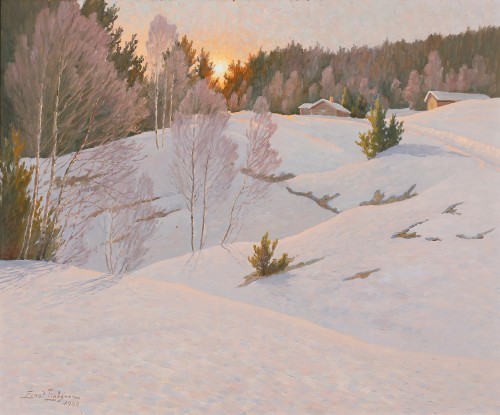


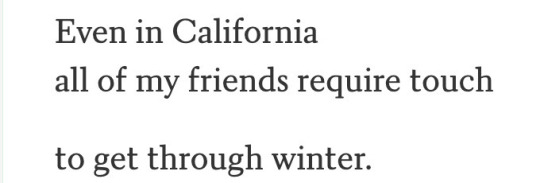
what good is the warmth of summer, without the cold of winter to give it sweetness.
Vita Nova, Louise Glück | Untitled, Sven Kroner | Not-Love is a Season, José Olivarez | Untitled (Winter Landscape), Ernst Lindgren | Snowdrops, Louise Glück | Winter Landscape, Johannes Gebhard | The Understudy, Hieu Minh Nguyen
#girl help i woke up and it was COLD#web weaving#web-weaving#webweaving#parallels#louise glück#sven kroner#josé olivarez#ernst lindgren#johannes gebhard#hieu minh nguyen#dark academia#classic academia#light academia
519 notes
·
View notes
Text



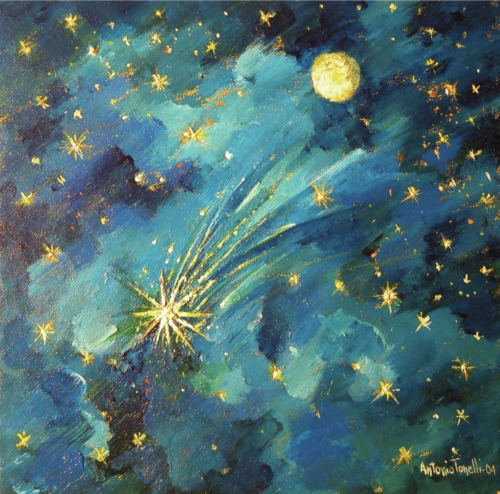






vaeril- the drow wizard (bg3 tav)
“herakles” by euripedes (tr. anne carson) \\ “winter landscape” by johannes gebhard \\ unknown \\ “the big comet” by antonio tonelli \\ “the gift of rain,” by twan eng tan \\ “rêve d’été” by shanna van maurik \\ from “eurydice” (tr. sarah ruhl) \\ “duino elegies: the first elegy” by rainer maria rilke (tr. a. poullin jr.) \\ jessica cioffi (@/loputyn) \\ “i am happy because everyone loves me” by louis wain
#vaeril#long post#not even tagging this (idk what i would if i wanted to) but … i didnt give up on her lil webweave#i tried again and found new stuff <3 its easier than just rambling about her. this is who she is :)#something something love & time & changing & happiness in spite of all the grief#being in the underdark for 90 years and wanting nothing more than to leave and see the world. loving her friends and then losing them#-but carrying the love still. she cant help but love and smile
25 notes
·
View notes
Text
Five steps of Wikipedia for Monday, 24th July 2023
Welcome, Willkommen, Benvenuta, 안녕하세요 🤗
Five steps of Wikipedia from "Lohfelderfähre" to "Antonio Farnese, Duke of Parma". 🪜👣

Start page 👣🏁: Lohfelderfähre
"Lohfelderfähre is a district of Bad Honnef, Germany. It evolved around the Eastern bank pier of the car ferry across the Rhine between Bad Honnef and Rolandseck...."
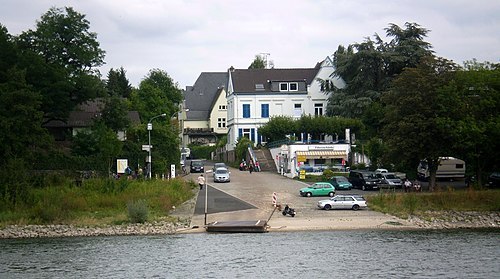
Image licensed under CC BY-SA 4.0? by Leit
Step 1️⃣ 👣: Rolandseck
"Rolandseck is a borough in the town of Remagen in Rhineland-Palatinate, Germany. The place consists almost entirely of villas and is a favorite summer resort. Crowning the vine-clad hills behind it lie the ruins of the castle, a picturesque ivy-covered arch, whence a fine view is obtained of the..."

Image by Plumpaquatsch
Step 2️⃣ 👣: Archbishop of Cologne
"The Archbishop of Cologne is an archbishop governing the Archdiocese of Cologne of the Catholic Church in western North Rhine-Westphalia and is also a historical state in the Rhine holding the birthplace of Beethoven and northern Rhineland-Palatinate in Germany and was ex officio one of the..."
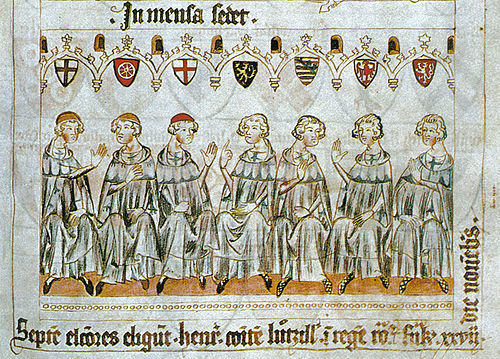
Image by Unknown authorUnknown author
Step 3️⃣ 👣: Agnes von Mansfeld-Eisleben
"Agnes von Mansfeld-Eisleben (1551–1637) was Countess of Mansfeld and the daughter of Johann (Hans) Georg I, of Mansfeld Eisleben. She converted Gebhard, Seneschal of Waldburg, the Prince-Elector of Electorate of Cologne and archbishop of the Diocese of Cologne to the Protestant faith, leading to the..."
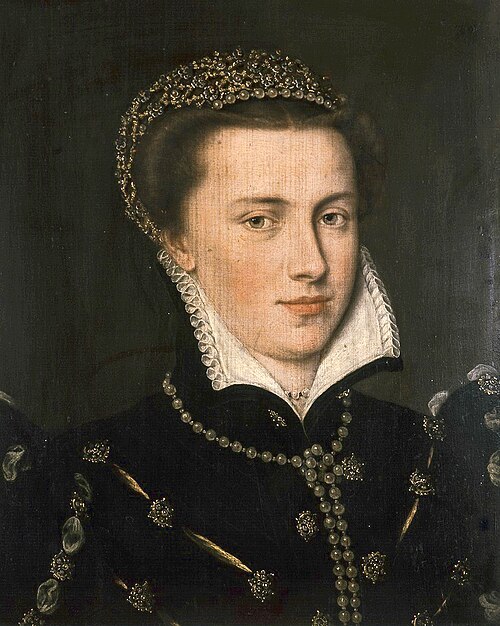
Image by Unknown master painter from northern Rhineland
Step 4️⃣ 👣: Alexander Farnese, Duke of Parma
"Alexander Farnese (Italian: Alessandro Farnese, Spanish: Alejandro Farnesio; 27 August 1545 – 3 December 1592) was an Italian noble and condottiero, and a general of the Spanish army, who was Duke of Parma, Piacenza and Castro from 1586 to 1592, as well as Governor of the Spanish Netherlands from..."
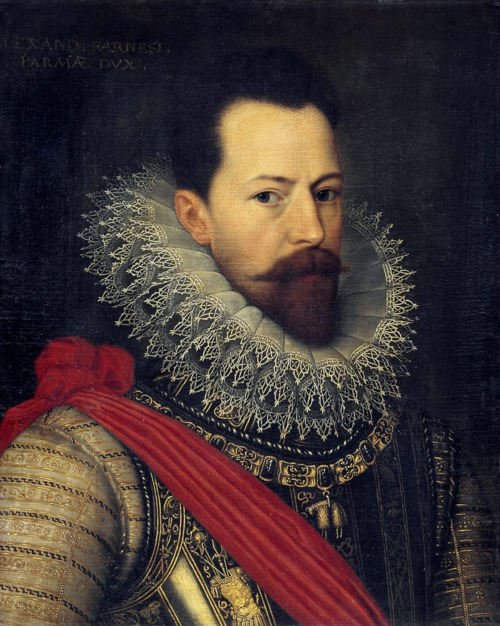
Image by Otto van Veen
Step 5️⃣ 👣: Antonio Farnese, Duke of Parma
"Antonio Farnese (29 November 1679 – 20 January 1731) was the eighth and final Farnese Duke of Parma and Piacenza. He married, in 1727, Enrichetta d'Este of Modena with the intention of begetting an heir. The marriage, however, was childless, leading to the succession of Charles of Spain, whose..."

Image by Unidentified painter
0 notes
Text
Neues Denkmal für Bischof Sproll, der Widerstand gegen Nazi-Deutschland leistete
Bischof Gebhard Fürst von Rottenburg-Stuttgart hat am Sonntagabend ein Denkmal für Bischof Johannes Baptista Sproll, der in der Zeit des Nationalsozialismus nachdrücklich Widerstand geleistet hatte, in Backnang eingeweiht. Seit 2011 ist ein Seligsprechungsverfahren für den einstigen Bischof von Rottenburg in Gang. Das Bistum Rottenburg-Stuttgart berichtete am Montag, Fürst hab
https://de.catholicnewsagency.com/story/neues-denkmal-fuer-bischof-sproll-der-widerstand-gegen-nazi-deutschland-leistete-11894
0 notes
Text

Autumn at Königstein Fortress, the "Saxon Bastille", is a hilltop fortress near Dresden, in Saxon Switzerland, Germany, above the town of Königstein on the left bank of the River Elbe. It is one of the largest hilltop fortifications in Europe and sits atop the table hill of the same name. The rock plateau rises 240 metres above the Elbe and has over 50 buildings, some over 400 years old, that bear witness to the military and civilian life in the fortress. The fortress, which for centuries was used as a state prison, is still intact and is now one of Saxony's foremost tourist attractions, with 700,000 visitors per year. By far the oldest written record of a castle on the Königstein is found in a deed by King Wenceslas I of Bohemia dating to the year 1233, in which a witness is named as "Burgrave Gebhard of Stein". At that time the region was split between the Kingdom of Bohemia and the Bishopric of Meissen. Between 1589 and 1591/97 Prince-Elector Christian I of Saxony and his successor had the castle developed into the strongest fortification in Saxony. The second construction period followed from 1619 to 1681, during which inter alia the John George Bastion (Johann-Georgenbastion) was built in front of the Johann-Georgenburg. The third construction period is seen as the time from 1694 to 1756, which included the expansion of the Old Barracks. From 1722 to 1725, at the behest of August the Strong, coopers under Böttger built the enormous Königstein Wine Barrel (Königsteiner Weinfass), the greatest wine barrel in the world, in the cellar of the Magdalenenburg which had a capacity of 249,838 litres. Because Königstein Fortress was regarded as unconquerable, the Saxon monarchs retreated to it from Wittenberg and later Dresden during times of crisis and also deposited the state treasure and many works of art from the famous Zwinger here; it was also used as a country retreat due to its lovely surroundings.
(Photography by: Dirk Seifert)
0 notes
Text
Friedrich und lochner handbuch canon
FRIEDRICH UND LOCHNER HANDBUCH CANON >> DOWNLOAD LINK
vk.cc/c7jKeU
FRIEDRICH UND LOCHNER HANDBUCH CANON >> READ ONLINE
bit.do/fSmfG
canonical artthe canon in art history: concepts and approaches
Friedrich und lochner handbuch canon Salus vs20wrf bedienungsanleitung lp-s08 bedienungsanleitung 6sl3224 0be13 7ua0 handbuch maschinenbau 03.06.2019 Among the few German texts Zacharias Lochner's Zwey Büchlein der gerechneten His works were translated into Latin by Friedrich Gottlob Born (LeipzigHandbuch der juristischen Literatur: in systematisch-chronologischer Ordnung ; von der Mitte des vorigen Jahrhunderts bis zum Jahre 1840. Purmann, Johann Georg; Gebhard, Johann Christian [Bearb.] Allgemeines Handbuch der Schulwissenschaften. Frankfurt am Mayn: bey Johann Christian Gebhardt, 1786- Jh liegen vor Friedrich Erdmann von Bucquoys Leben und Thaten des General J. Bergs Erben, Lochner); Offenbach (Johann André); ferner aus Frankfurt, Brendel, Adam ; Lochner von Hummelstein, Johann Heinrich ; Lochner, Michael Friedrich. Wittenberg : seel. Gerdesii Wittwe Schrifften, 1715 Nürnberg : Lochner, 1750 - 1758 Franckfurth ; Leipzig : Lochner, 1733 Darinnen Die meisten in Jure Civili, Canonico, Feudali, Camerali,
https://semoqotilil.tumblr.com/post/694473471137382400/siemens-c35-bedienungsanleitung, https://wutagimuqos.tumblr.com/post/694473277613260800/sony-md-mz-r35-bedienungsanleitung-sony, https://qetopukuf.tumblr.com/post/694473436559491072/bedienungsanleitung-samsung-galaxy-s3-lte-price, https://qusujavakuf.tumblr.com/post/694473465687932928/medion-md-86643-bedienungsanleitung-hp, https://semoqotilil.tumblr.com/post/694473471137382400/siemens-c35-bedienungsanleitung.
0 notes
Photo

Summer Day - Johannes Gebhard.
Finnish, 1894 x 1976
Oil on canvas, 46 x 38 cm.
83 notes
·
View notes
Photo
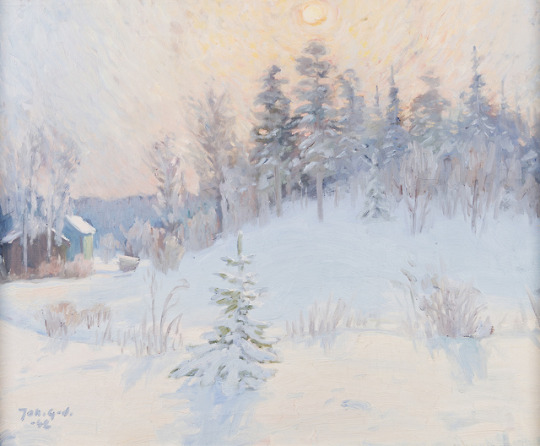
Johannes Gebhard (1894 - 1976) - Winter Landscape. 1942. Oil on canvas.
6K notes
·
View notes
Photo

Johanne Gebhard (Finnish, 1894-1976), Still-life, 1929
Oil on canvas, 54 x 65 cm
40 notes
·
View notes
Text
Napoleon's impact on Prussia.
Napoleon's long-term impact varied considerably across Europe. Nonetheless, even in those territories where the French could not directly intervene, the shocks of military defeat and foreign occupation had profound repercussions, forcing local elites to accept internal reforms in an effort to deal with France. The best example of this comes from Prussia. The post-1807 years were marked by economic devastation caused y mounting state debts, unrelenting French demands for indemnity payments, and the costs of supplying an army of occupation. The government was forced to increase taxes, debase the coinage, and issue paper money. The financial health of the state continued to deteriorate, with the state debt, which stood at 53 million gulden before 1806, increasing to 112 million gulden in 1811, and over 200 million by the end of the Napoleonic Wars.
The effects of the French occupation stirred national sentiments among many Germans. The plight of German states inspired Johann Fichte, a professor at the University of Erlangen, to deliver his famous fourteen "Addresses to the German Nation" (1808), one of the first expressions of budding German nationalism. Selfishness and division, Fichte argued, had ruined German states, which now faced the daunting task of surviving French domination. Evoking distinctiveness in language, tradition, and literature, he called upon the German people to free themselves from Napoleon. These sentiments echoed in patriots such as Karl August Fürst von Hardenberg, Heinrich Freiherr vom und zum Stein, Gebhard von Blücher, Gerhard von Scharnhorst, and August von Gneisenau, who did their best to rebuild the country's economy and military in the wake of the shattering defeat.
[..]
Gerhard von Scharnhorst, an officer of considerable intellect and talents, played a decisive role in modernizing the Prussian military and developing new and influential concepts in military theory and practice. As Prussia abolished serfdom, Scharnhorst and his fellow reformers appealed to the common Prussian's sense of patriotism as a means to create an army of citizen-soldiers. In July 1807 King Frederick William III established a Commission for Military Reorganization, with Scharnhorst as president. The commission conducted a veritable purge of the Prussian army in light of its performance in the 1806 debacle, dismissing incapable officers, promoting worthy ones, and ending the custom of recruiting foreigners. The harsh discipline of the Frederickian army was abolished, while the stifling power of the Junkers (landowning nobility) was relaxed, to allow for the rise of men of talent and merit. The reforms reorganized the Prussian army into effective combined-arms brigades along the French model, improved its drill and tactics, and developed the Landwehr, a national militia. Equally important was the Krümpersystem (shrinking system), which was designed to quickly train army recruits and move them into the reserves so that more men could be trained while keeping the size of the standing army at the 42,000 limit imposed by Napoleon in the Peace of Tilsit (1807). Furthermore, the Prussian monarchy gave its consent to the establishment of the famed Berlin Kriegsakademie (War College) where Prussian officers began laying the foundation for a truly modern general staff.
Fichte's appeal for an enlightened system of education had a noteworthy effect. The Prussian education system was reformed and placed under the leadership of the distinguished Prussian philosopher and linguist Wilhelm von Humboldt (brother of the famed geographer and naturalist Alexander von Humboldt), who used his learning and enthusiasm to lay the foundation for what became the Humboldtisches Bildungsideal (Humboldtian education ideal), integrating the arts and sciences with research to achieve comprehensive general learning and cultural knowledge. Prussian universities- at Königsberg, Frankfort on the Oder, and Halle, augmented by the newly established ones at Berlin and Breslau- played a key role in the national revival, kindling the patriotic spirit and training a new generation of men to lead the Prussian state.
Alexander Mikaberidze- The Napoleonic Wars, A Global History.
#napoleonic#alexander mikaberidze#the napoleonic wars: a global history#history of prussia#history of germany
9 notes
·
View notes
Text
Hohenwerfen Castle
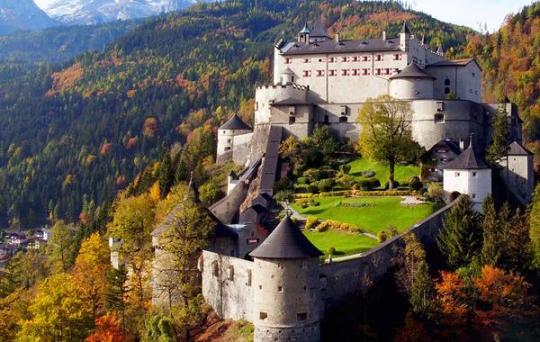


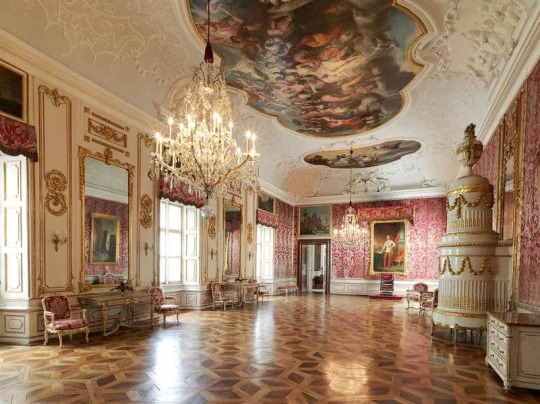
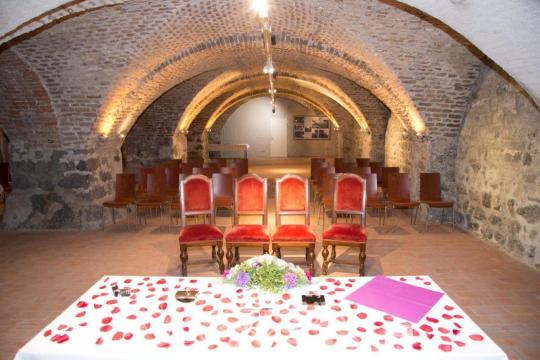
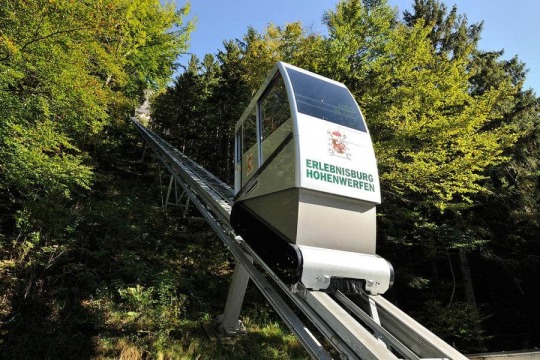
Hohenwerfen Castle is located in Werfen, Austria. The Medieval castle was one of three fortresses ordered to be built by Archbishop Gebhard. Due to political unrest and conflict, it became necessary to place the archbishop under armed protection. Hohenwerfen Castle was built in 1077 upon a precipice overlooking the city. The fortress is surrounded by the Berchtesgaden Alps and the adjacent Tennen Mountains. It reached its current size in the 15th century. During the 16th century, peasant revolts led to the castle being plundered, burned, and damaged. It was repaired, and a watchtower and hidden staircase were added. In the 17th and 18th centuries, the castle served as a prison. With the secularization of Salzburg, in 1803, the castle fell to Bavarian rule and was left to deteriorate. From 1824-1833, Archduke Johann, the emperor’s brother, had the castle repaired and restored. The castle was used as a hunting retreat. In 1898, Archduke Eugen purchased the estate and expanded the castle while adding to his collection of art and weaponry. The main building of the castle complex was destroyed by fire in 1931. In 1938, the castle served as a Nazi education camp and military training center, and from 1945-1987 the Salzburg police school used the fortress. In 1987, the castle was opened to the public for guided tours. The estate boasts a torture chamber, ancient weapons, a bell tower, and more. The fortress serves as an “Adventure Castle,” featuring events, concerts, and theater performances. There’s an exhibition highlighting the practice of sorcery and those executed by Salzburg’s royal court in 1675-79 and another exhibition to the film “Where Eagles Dare.”Hohenwerfen Castle has a birds of prey museum, exhibits, and demonstrations. There’s a tavern, a Knights’ Store, and yearly events. The castle serves as a venue and film location. Due to the steep walking path, there is an elevator lift ticket available for purchase.
15 notes
·
View notes
Video
youtube
Heinrich Ignaz Franz Biber - Missa Alleluia in C-Dur à 36 voci [Alleluja Mass in C major]
Ars Antiqua Austria conductor Gunar Letzbor
0:00 Kyrie 2:58 Gloria 11:35 Credo 24:40 Santus Benedictus 31:45 Agnus Dei Ars Antiqua Austria: Fritz Krircher, Barbara Konrad, viool/violin Peter Aigner, Wolfram Fortin, altviool/tenor violin Claire Pottinger, cello Jan Krigovsky, Roberto Sensi, violone Erich Traxler, Sergej Tscherepanov, orgel/organ Hubert Hoffmann, theorbe/theorbo Andreas Lackner, Herbert Walser, clarino Thomas Steinbrucker, Martin Sillaber, Gerd Bachmann, Georg Pranger, trompet/trumpet Georg Tausch, pauken/timpani Norbert Salvenmoser, Gerhard Schneider, Johannes Giesinger, trombone Frithjof Smith, Gebhard David, cornetto/cornett Solisten van de St. Florianer Sängerknaben Solists: Josef Pascal Aur, Simon Paul Bernhard, Daniel Mandel, sopraan/soprano Alois Mühlbacher, alt/alto Franz Farnberger koorleider/choral conductor Markus Forster, alt/alto Bernd Lambauer, tenor Gerhard Kenda, bas/bass Ulfried Staber, bas/bass Gunar Letzborg, conductor
3 notes
·
View notes
Text
A fortress up on a hill

The construction of Hohenwerfen Castle coincides in time with that of the Hohensalzburg fortress during the last quarter of the 11th century. It was to ensure security along the Salzach river valley for the prince-archbishops of Salzburg during a time of revolts that led Archbishop Gebhard to take over the beginning of these two fortifications.
On the mountain near the village of Werfen in Salzkammergut, a military position of Roman origin was initially extended, no further than a wooden construction that already enjoyed an imposing defensive position thanks to the more than 600 meters of elevation with respect to the valley.
The political importance of the prince-archbishops was increasing and until the 15th century Hohenwerfen grew to become one of the main military positions at the foot of the Alps.
In the 16th century revolts again spread through the lands of the Salzburg ecclesiastical rulers, and this time the fortress could not prevent the revolted peasants from besieging and partially destroying it.
The prince-archbishop Matthäus Lang began a new renovation of the castle during the first half of the 16th century, fixing the destruction caused by the serfs' uprising.
In the second half of the same century, Archbishop Jakob Khuen-Belasy continued the reformation inspired by Italian fortresses. For the next two centuries, Hohenwerfen served as a prison.
At the beginning of the 19th century, the Napoleonic Wars led to the extinction of the ecclesiastical principality of Salzburg and the reorganization of the Central European political map, placing the region in the hands of the Kingdom of Bavaria, at which time Hohenwerfen was no more than a collection of ruins.
After the fall of Napoleon and the new political reorganization resulting from the Congress of Vienna, Archduke Johann, brother of Emperor Franz I of Austria, began the restoration of Hohenwerfen, inspired by the Germanic Romantic style of the second quarter of the 19th century.
After becoming a hunting lodge, another archduke, Eugen, a member of a secondary branch of the Austrian imperial family, acquired the complex to make it a residence and to house a collection of weapons and art pieces.
Already in the 20th century, the main building of the castle burned down in 1931, and Archduke Eugen himself had it rebuilt, although after the Anschluss -the annexation of Austria to Germany-, he had to sell it to the Nazi-ruled state, which turned it into a military training center.
After the Second World War, Hohenwerfen continued to be a training center, this time for the Austrian Gendarmerie, and at the end of the 20th century it was opened to the public.
1 note
·
View note
Text
Austrian Houses, Residential Property
Austrian House, Residential Architecture Austria, Alps Residences Images, Architects, Homes
Austrian Houses : Architecture
Key Contemporary Residential Buildings in central Europe – New Homes + Property
post updated 6 September 2021
Austrian Properties
e-architect select what we feel are the best examples of Austrian Houses. We aim to include houses in Austria that are either of top quality or interesting, or ideally both. We cover completed Austrian houses, new house designs, architectural exhibitions and architecture competitions across Austria.
Austrian Architecture Design – chronological list
Austrian House – Latest Designs
Austrian Residential Architecture – latest additions to this page, arranged chronologically:
9 July 2021
White House, Neusiedl am See, Burgenland
Design: X Architekten
photo : Gebhard Sengmüller
White House, Neusiedl am See
Driven by the desire to have their own house, the young family was able to find the perfect plot of land in Neusiedl am See. The connection to Vienna International Airport and the proximity to Vienna, Bratislava and Budapest were just as decisive for the choice of property as the hillside location on Kirchberg and the resulting view of Lake Neusiedl.
15 Nov 2020
House Mesh, Hagenberg near Linz
Design: Caramel architekten
photos by Paul Eis and Kerstin O.
House Mesh near Linz
A generous green roof as a cut-out and folded landscape forms the largest space-forming element of the house. The lightweight timber construction with a ventilated metal facade and large glass elements form the remaining outer skin surfaces.
post updated 24 Oct 2020
House in Zellerndorf
Design: franz, Wien
photo : Lisa Rastl
Wohnhaus Zellerndorf
The site is located in a settlement of detached single-family houses, characteristic for the 1970s. The traditional arrangement of functions for each storey: basement/garage; ground floor/living space; attic floor/ bedrooms; has been transformed into a linear order. the so called „streckhof“, the original farm model for this area has been adapted by stringing together different functions in one floor.
22 Oct 2020
Perchtoldsdorf Villa
Design: Jan Proksa Studio
photo : BoysPlayNice
Perchtoldsdorf Villa, Mödling District
Imagining a villa, one pictures a sprawling complex of buildings and land, echoing dynastic opulence. For this villa commission in a quiet village outside of Vienna, Jan Proksa was challenged with maximizing the volume of a difficult and narrow plot of land in order to create a modern living space for a two-generation family.
22 Sep 2020
Living by the harbour, Sintstrasse, Linz, Upper Austria
Design: X ARCHITEKTEN
photo : Lisi Grebe
Living by the harbour Linz
The property is located at the transition between the urban parts and the industrial areas at the port of the city of Linz and is to be newly built and redensified with rental apartments of the social housing and a kindergarten. The main square two kilometres away and the local recreation areas along the Danube are within walking distance.
10 Dec 2018
House Dellacher, Oberwart, Burgenland
Architects: Raimund Abraham and Johannes Handler
photograph : Rainer Schoditsch
House Dellacher in Oberwarta
The House Dellacher was built in Oberwart, Austria, between 1965 and 1969 based on the designs by Austrian born American architect Raimund Abraham for photographer Max Dellacher.
31 Jul 2017
Casa Invisibile
Design: DMAA
photo © https://ift.tt/3tmxmfY
Casa Invisibile
Casa Invisibile is a flexible housing unit, which consists of a prefabricated wood structure designed for turnkey implementation at any designated site. Maximum flexibility and spatial quality are the key elements in its concept of development.
12 Jun 2017
A House for Art, Hohe Wand, Wiener Neustadt-Land, Lower Austria
Architects: Veech x Veech
photo : Vera Subkus
A House for Art in Hohe Wand
Vienna-based multidisciplinary architecture and design practice Veech X Veech set up a multifunctional artist studio in the environs of Vienna. The combination of studio, gallery space and dwelling provides a unique living and working environment for the renowned artist couple Vadim Kosmatschof, sculptor, and Elena Koneff, visual artist.
5 Jun 2017 & 26 Sep 2016
House D – single family house, Austria
Design: Caramel Architekten with absolut-architekten
photo : Christian Sperr
Haus D Austria Property near Vienna
5 Apr 2016
house e – single family house, Linz
Design: Caramel Architekten
photo : Martin Pröll and Caramel
Upper Austria Property
Located on the periphery of the city, the plot of land offers a spectacular view of Linz, as long as one builds high enough to be able to gaze over the neighbouring properties.
4 Nov 2015
Deluxe Mountain Chalets, Styria
Design: Viereck Architects
photograph : Andreas Tischlerl
Deluxe Mountain Chalets Styria
Set within the scenic mountain panorama of upper Styria, Austria, the “Deluxe Mountain Chalets” serve as an extension to the numerously awarded high- end restaurant “Wirtshaus Steirereck”.
20 Aug 2013
Villa S, Upper Austria
Design: TWO IN A BOX Architects
photo : Simon Bauer
Villa S
The villa is L-shaped and aligned to the south-west featuring generous glazing to the porch in front of the house and a garden with water areas. The light hill-side location, the expanded ground floor facing the street and the carport form a generous forecourt and entrance hall.
20 Aug 2013
Villa Upper Austria
Design: TWO IN A BOX
photo from architects
Villa Upper Austria
“Between lightness and gravity”
Due to the steep sloping terrain, the view and the direction of the sun special attention was required with regard to the alignment of living rooms and sleeping rooms. The villa has three levels adapted to the line of sight and staggered towards each other on top of a basement garage.
23 Apr 2013
Haus Walde, Tyrol
Design: GOGL Architekten
photo : Mario Webhofer
Tyrol House
The client requested an open, light-filled room with the garden and the beautiful backdrop of the Kitzbühl Alps integrated into the living space.
23 Apr 2013
Haus Wiesenhof, Tyrol
Design: GOGL Architekten
photo : Mario Webhofer
Haus Wiesenhof
The house communicates with the dominant mountain range, with every view resembling a painting. The decision to utilise archaic materials was made quite consciously to quote the surrounding farmsteads. The client wanted an atmosphere that was light and airy, but also cosy.
Key Recent Austrian Houses
Austria Residential Architecture in 2012, chronological:
14 Nov 2012
haus_y2, Linz, north west Austria
Design: Destilat
photograph : Mark Sengstbratl
House in Linz
The property is located on a steep slope at the foot of pöstlingberg in the immediate vicinity of the danube. like all buildings along this residential estate’s main street, its width amounts only to 21 m. some of the neighbouring structures extend almost to the property’s boundary; therefore an orientation towards east and west was of lesser importance.
11 Jun 2012
L-house, Burgenland
Design: Architects Collective
photo from architect
New House in Austria
The new home for a young family is harmoniously placed into the hilly landscape. The traditional and typical L-shaped floor plan of the region was developed further in an imaginative and thoughtful way advancing modern home, energy and living concepts. The L-House is an avant-garde architectural gem that merges the needs of it’s residents with the environment.
My Home is my Patio, Linz, Upper Austria
Design: xarchitekten
picture © Max Nirnberger
My Home is my Patio
EdelWeiss Residences, Katschberg
Design: Matteo Thun & Partners
photo © jens weber, munich
EdelWeiss Residences
Austrian Houses
Austria Residential Designs, alphabetical:
Amalia House, Kirchbach
Design: Grid Architects
photograph : Lukas Schaller
Austrian holiday house
The Beatle of Kagran, Vienna
Design: flatzarchitects
image from architect
Beatle of Kagran
Folded House, Lower Austria
Design: xarchitekten
picture : Max Nirnberger
Folded House Austria
House H – family house, Linz, Upper Austria
Design: Caramel Architekten ; interior friedrich stiper
photo : h.hurnaus
House H
House Kaps – extension, Saalfelden
Design: Caramel Architekten
photo : j. felsch + caramel
House Kaps
House Lina – for a mother with a child, Linz
Design: Caramel Architekten
photo : caramel
House Lina
House M, Linz, Upper Austria
Design: Caramel Architekten
photo : otto hainzl + caramel
House M
House P, Klosterneuburg
Design: Caramel Architekten ; barbara s. bovelino
photo : hertha hurnaus
House P
P-K House, Punitz, Lower Austria
Design: Pichler & Traupmann Architekten
photo from architects
Haus PK Punitz
More Austrian Houses online soon
Location: Austria, central Europe
Austrian Architecture : A-K
Austrian Building Designs : L-Z
Vienna Buildings
Architecture Developments in countries near to Austria
Hungarian Architecture
Italian Architecture
Swiss Buidings
German Buildings
Czech Architecture
Slovenian Buildings
Croatian Developments
Slovakian Buildings
Austrian architects : Coop Himmelb(l)au
Buildings / photos for the Austrian Residential Architecture page welcome
The post Austrian Houses, Residential Property appeared first on e-architect.
0 notes
Text
Burg Hohenwerfen

La construcció del castell de Hohenwerfen coincideix en el temps amb la de la fortalesa de Hohensalzburg, al darrer quart del segle XI. Es tractava de garantir la seguretat al llarg de la vall del riu Salzach per part dels prínceps-arquebisbes de Salzburg, durant una època de revoltes que va fer que l'arquebisbe Gebhard assumís l'inici d'aquestes dues fortificacions.
A la muntanya propera a la població de Werfen, al Salzkammergut, inicialment es va ampliar una posició militar d'origen romà, no més enllà d'una construcció de fusta que ja gaudia d'una posició defensiva imponent gràcies als més de 600 metres d'elevació respecte de la vall.
La importància política dels prínceps-arquebisbes va anar en augment i fins al segle XV Hohenwerfen va anar creixent fins a convertir-se en una de les principals posicions militars als peus dels Alps.
Al segle XVI novament les revoltes van estendre's per terres dels sobirans eclesiàstics salzburguesos, i aquesta vegada la fortalesa no va poder evitar que els camperols revoltats l'assetgessin i la destruïssin parcialment.
El príncep-arquebisbe Matthäus Lang va iniciar una nova reforma del castell durant la primera meitat del segle XVI, reparant la destrucció provocada pels aixecaments dels serfs.
Durant la segona meitat del mateix segle, l'arquebisbe Jakob Khuen-Belasy va continuar la reforma inspirant-se en les fortaleses italianes. Als dos segles següents, Hohenwerfen va servir de presó.
A principis del segle XIX, les Guerres Napoleòniques van dur a l'extinció del principat eclesiàstic de Salzburg i la reorganitació del mapa polític centreeuropeu, posant la regió en mans del regne de Baviera, època en la que Hohenwerfen no era més que un conjunt de ruïnes.
Desprès de la caiguda de Napoleó i la nova reorganització política sorgida del Congrés de Viena, l'arxiduc Johann, germà de l'Emperador Franz I d'Àustria, va iniciar la restauració de Hohenwerfen seguint l'estil del romanticisme germànic del segon quart del segle XIX.
Després de convertir-se en pavelló de caça, un altre arxiduc, Eugen -membre d'una branca secundària de la família imperial austríaca–, va adquirir el complex per fer-ne d'ell una residència i allotjar-hi una colecció d'armes i peces artístiques.
Ja al segle XX, l'edifici principal del castell es va cremar l'any 1931, i el mateix arxiduc Eugen el va fer reconstruir, tot i que després de l'Anschluss -l'annexió d'Àustria a Alemanya-, va haver de vendre'l a l'Estat dirigit pels nazis, que el van convertir en un centre d'instrucció militar.
Després de la Segona Guerra Mundial, Hohenwerfen va continuar sent un centre d'entrenament, aquesta vegada de la Gendarmeria austríaca, per acabar a finals del segle XX obrint-se al públic.
1 note
·
View note
Text
Witch Trials - Witch Hunts

Johannes Junius
(The Burgomaster of Bamberg)
Written and compiled by George Knowles
In the early 17th century, the city of Bamberg, Germany was at the centre of some of the most vicious and prolific witch persecutions to take place during the whole 200-year history of the Burning Times. The persecutions of witches in Bamberg began under the auspices of the Prince-Bishop Johann Gottfried von Aschhausen (1609-1622), who was responsible for the torture and deaths of some 400 alleged witches. In one year alone 1617, 102 witches were accused, tortured, beheaded and burned.
When Prince-Bishop Gottfried Johann Georg II Fuchs von Dornheim (known as The Hexenbischof – The Witch Bishop) took over the diocese (1623-1633), witch-hunting and persecution reached new heights. Von Dornheim was an unscrupulous man motivated by power and greed rather than religious zeal, and held little regard for the laws of the state particularly when it came to lining his own pockets. Aided by his suffragan Bishop Friedrich Förner, they set up a secular council of Lawyers and expanded a network of informers to prey on the citizens of Bamberg. Their job as Commissioners of Law was to try and condemn anyone accused of witchcraft, and more importantly to confiscate their wealth and property.

Prince-Bishop Fuchs von Dornheim
In 1627 Von Dornheim built a special Drudenhaus (a witch prison) containing torture chambers and cell-rooms for thirty to forty prisoners, he also built similar ones in the smaller towns of the province: in Zeil, Hallstadt and Kronach. In them he employed full-time torturers and executioners and equipped them with all the latest torture devices, including: thumbscrews, leg-vices, racks, prayer stools fitted with sharp wooden pegs, stocks furnished with iron spikes, and perhaps the most severe and excruciating means of torture the strappado, often used with weights.

Drudenhaus (witch prison)
Other manual tortures employed included: sleep deprivation, forced feeding and drinking, pricking, branding, alternating cold water baths and scalding water baths to which lime had been added, feathers dipped in burning sulphur and held under the armpits and groin, and rope friction - when wrapped around the head or neck caused excruciating pain and often cut into the bone. Many other tortures were used so diabolical as to stretch the imagination.


The rack - Thumbscrew - The strappado was often used with weights
Torture in the Drudenhauses was the rule and vigorously applied to anyone unfortunate enough to be sent there, no one could resist confessing when subjected to the cruelty of their treatments. In just three years between 1627 and 1630, Von Dornheim and his henchmen systematically interrogated and condemned over 600 alleged witches in Bamberg alone, and another 900 in the provinces. No one safe during his reign of terror as he accused and executed some of the leading citizens of Bamberg, among his victims were the Chancellor - Dr. George Haan (together with his wife and daughter), the Treasurer - Wolfgang Hoffmeister and 5 district Burgomasters.
The last of the Burgomasters to be executed was Johannes Junius the Burgomaster of Bamberg, who had served in that capacity for the past 20 years. Shortly before his arrest in June 1628 his own wife had been executed as a witch, and so from that association and by being implicated by other victims of the witch-hunts, he too was arrested. The court account of his trial is typical of the many thousands of witch-trials from the period, but what makes this trial different is a poignant hand-written letter Junius wrote to his daughter Veronica while awaiting his own execution.
The record of the trial of Burgomaster Johannes Junius
On Wednesday, June 28, 1628, was examined without torture Johannes Junius, Burgomaster at Bamberg, on the charge of witchcraft: how and in what fashion he had fallen into that vice. Is fifty-five years old, and was born at Niederwaysich in the Wetterau. Says he is wholly innocent, knows nothing of the crime has never in his life renounced God: says that he is wronged before God and the world, would like to hear of a single human being who has seen him at such gatherings (as the witch-sabbats).
Confrontation of Dr. Georg Adam Haan. Tells him to his face he will stake his life on it (er wolle darauf leben und sterben) that he saw him, Junius, a year and a half ago at a witch-gathering in the electoral council-room, where they ate and drank. Accused denies the same wholly.
Confronted with a servant Ellse. Tells him likewise that he was on Hauptsmorwald at a sabbat, but first the holy wafer was desecrated. Junius denies. Hereupon he was told that his accomplices had confessed against him and was given time for thought.
On Friday, June 30, 1628, the aforesaid Junius was again without torture exhorted to confess, but again confessed nothing; whereupon . . . since he would confess nothing, he was put to the torture, and first thumbscrews were applied. Says he has never denied God his Saviour nor suffered himself to be otherwise baptised; will again stake his life on it; feels no pain in the thumbscrews.
Leg-vices (Beinschauben). Will confess absolutely nothing; knows nothing about it. He has never renounced God; will never do such a thing; has never been guilty of this vice. Feels likewise no pain.
Is stripped and examined; on his right side is found a bluish mark, shaped like a trefoil, is thrice pricked without sensation or drawing blood.
Strappado. He has never renounced God. God will not forsake him. If he were such a wretch he would not let himself be so tortured. God must show some token of his innocence. He knows nothing about witchcraft. . . .
On July 5, the above named Junius is without torture, but with urgent persuasions, exhorted to confess, and at last begins and confesses:
The Confession of Burgomaster Johannes Junius
When in the year 1624 his law-suit at Rothweil cost him some six hundred florins, he had gone out, in the month of August, into his orchard (Baumfeld) at Friedrichsbronnen; and, as he sat there in thought, there had come to him a woman like a grass-maid, who had asked him why he sat there so sorrowful. He had answered that he was not despondent, but she had led him by seductive speeches to yield to her will. . . . And thereafter this wench had changed into the form of a goat, which bleated and said, “Now you see with whom you have had to do. You must be mine or I will forthwith break your neck”. Thereupon he had been frightened, and trembled all over for fear. Than the transformed spirit had seized him by the throat, and demanded that he should renounce God Almighty, whereupon Junius said, “God help me”, " and thereupon the spirit vanquished through the power of these words. Yet it came straightway back, brought more people with it, and persistently demanded of him that he renounce God in Heaven and all the heavenly host, by which terrible threatening he was obliged to speak this formula: “I renounce God in Heaven and his host, and will henceforward recognise the Devil as my God”.
After the renunciation he was so far persuaded by those present and by the evil spirit that he suffered himself to be baptised by the devil in the evil spirit’s name. The Morhauptin had given him a ducat as dower-gold, which afterwards became only a potsherd.
He was then named Krix. His succubus was called Vixen (Füchsin). Those present had congratulated him in Beelzebub’s name and said that they were now all alike. At his baptism, among others, were the aforesaid Morhauptin Christiana, the young Geiserlin, Paul Glaser, Casper Wittich, and Claus Gebhard, who were both gardeners. After this they had dispersed.
At this time, his paramour had promised to provide him with money, and from time to time to take him to the sabbats.
Whenever he wished to ride to the sabbat, a black dog would come to his bed, and tell him to come; whereupon he would mount it, and the dog would raise himself in the devil’s name and so fly off.
About two years ago, he was taken to the electoral council-room, at the left hand as one goes in. Above, at a table, were seated the Chancellor, the Burgomaster Neudecker, Dr. George Haan, (and twenty-four others). Since his eyes were not good, he could not recognise more persons.
More time for consideration was now given him.
On July 7, 1628, the aforesaid Junius was again examined, to know what further had occurred to him to confess. He confesses that about two months ago, on the day after an execution was held, he was at a witch dance at the Black Cross, where Beelzebub had shown himself to them all and said expressly to their faces that they must all be burned together on this spot, and had ridiculed and taunted those present. Names four more witches.
The Crimes of Burgomaster Johannes Junius
Immediately after his seduction, his succubus had demanded that he should make away with his youngest boy Hans Georg, and had given him a grey powder for this purpose; this, however, being too hard for him, he had made away with his brown horse, instead.
His succubus had also repeatedly urged him to kill his two daughters . . . and because he refused he had been beaten therefor.
Once, at the suggestion of his succubus, he had taken the holy wafer out of his mouth and given it to her. Was obliged occasionally to have intercourse with his succubus.
A week before his arrest, as he was going to St. Martin’s church, the Devil met him on the way, in the form of a goat, and told him that he would soon he imprisoned, but that he should not trouble himself - he would soon set him free. Besides this, by his soul’s salvation, he knew nothing further; but what he had spoken was the pure truth; on that he would stake his life.
On August 6, 1628, there was read to the aforesaid Junius this his confession, which he then wholly ratified and confirmed, and was willing to stake his life upon it. And afterwards he voluntarily confirmed the same before the court.
Later that day on the 06th of August 1628, Johannes Junius was burned at the stake.
Such was the official end to the trial and execution of Johannes Junius, but not the end to this tragic story. Before his execution, Junius was able to have a letter smuggled out of the Drudenhaus by one of his jailers, who for the price of a taler delivered it to his daughter Veronica. In the letter he warns her to flee the city before she too is accused of witchcraft by similar implication and association. The letter is a chilling first-hand account of the trial and torture he suffered while detained in the infamous Bamberg Drudenhaus.

The letter of Burgomaster Johannes Junius
July 24, 1628
Many hundred thousand good-nights, dearly beloved daughter Veronica. Innocent have I come into prison, innocent have I been tortured, innocent must I die. For whoever comes into the witch prison must become a witch or be tortured until he invents something out of his head and - God pity him - bethinks him of something.
I will tell you how it has gone with me.
When I was the first time put to the torture, my brother-in-law, Dr. Braun, Dr. Kotzendorffer, and two strange doctors were there. Then Dr. Braun asks me; “Kinsman, how come you are here?” I answer, “Through falsehood and through misfortune”. “Hear, you,” he retorts, “you are a witch. Will you confess it voluntarily? If not, we’ll bring in witnesses and the executioner for you”. I said, “I am no witch; I have a pure conscience in the matter. If there are a thousand witnesses, I am not anxious, but I'll gladly hear them”.
Then the Chancellor’s son was set before me, who said he had seen me. I asked that he be sworn and legally examined, but Dr. Braun refused it. Then the Chancellor, Dr. George Haan, was brought, who said the same as his son. Afterward Höppfen Ellse. She had seen me dance on Hauptsmorwald, but they refused to swear her in. I said: “I have never renounced God, and will never do it - God graciously keep me from it. I’ll rather bear whatever I must”.
And then came also - God in highest Heaven have mercy - the executioner, and put the thumbscrews on me, both hands bound together, so that the blood spurted from the nails and everywhere, so that for four weeks I could not use my hands, as you can see from the writing.
Thereafter they stripped me, bound my hands behind me, and drew me up on the ladder. Then I thought heaven and earth were at an end. Eight times did they draw me up and let me fall again, so that I suffered terrible agony. I said to Dr. Braun, “God forgive you for thus misusing an innocent and honourable man”. He replied, “You are a knave”.
And this happened on Friday, June 30, and with God’s help I had to bear the torture. When at last the executioner led me back into the cell, he said to me, “Sir, I beg you, for God’s sake, confess something, whether it be true or not. Invent something, for you cannot endure the torture which you will be put to; and, even if you bear it all, yet you will not escape, not even if you were an earl, but one torture will follow another until you say you are a witch. Not before that”," he said, “will they let you go, as you may see by all their trials, for one is just like another”.
Then came George Haan, who said the commissioners had said the Prince-Bishop wished to make such an example of me, that everybody would be astonished.
And so I begged, since I was in wretched plight, to be given one day for thought and a priest. The priest was refused me, but the time for thought was given. Now, my dearest child, see in what hazard I stood and still stand. I must say that I am a witch, though I am not - must now renounce God, though I have never done it before. Day and night I was deeply troubled, but at last there came to me a new idea. I would not be anxious, but, since I had been given no priest with whom I could take counsel, I would myself think of something and say it. It were surely better that I just say it with mouth and words, even though I had not really done it; and afterwards I could confess it to the priest, and let those answer for it who compel me to do it . . . And so I made my confession, as follows; but it was all a lie.
Now follows, dear child, what I confessed in order to escape the great anguish and bitter torture, which it was impossible for me longer to bear.
Such were the true events of his trial and torture leading up to his confession, which is very much as it appears given in the record of his trial. The letter continues:
Then I had to tell what people I had seen (at the witch sabbat). I said that I had not recognised them. “You old knave, I must put the torturer at your throat. Say - was not the Chancellor there?” So I said yes. “Who besides?” I had not recognised anybody. So he said: “Take one street after another. Begin at the market, go out on one street and back on the next”. I had to name several persons there. Then came the long street (die lange Gasse). I knew nobody. Had to name eight persons there. Then the Zinkenwert - one person more. Then over the upper bridge to the Georgthor, on both sides. Knew nobody again. Did I know nobody in the castle - whoever it might be, I should speak without fear. And thus continuously they asked me on all the streets, though I could not and would not say more. So they gave me to the torturer, told him to strip me, shave me all over, and put me to the torture. “The rascal knows one on the market-place, is with him daily, and yet won’t name him”. By this they meant Burgomaster Dietmeyer: so I had to name him too.
Then I had to tell what crimes I had committed. I said nothing. . . “Hoist the knave up!” So I said that I was to kill my children, but I had killed a horse instead. It did not help. I had also taken a sacred wafer, and had buried it. When I had said this, they left me in peace.
Now, dearest child, here you have all my acts and confession, for which I must die. And they are sheer lies and inventions, so help me God. For all this I was forced to say through dread of the torture beyond what I had already endured. For they never leave off with the torture till one confesses something; be he ever so pious, he must be a witch. Nobody escapes, though he were an earl. If God send no means of bringing the truth to light, our whole kindred will be burned. God in heaven knows that I know not the slightest thing. I die innocent and as a martyr.
Dear child, keep this letter secret, so that people do not find it, else I shall be tortured most piteously and the jailers will be beheaded. So strictly is it forbidden. . . . Dear child, pay this man a thaler. . . . I have taken several days to write this: my hands are both crippled. I am in a sad plight. . . .
Good night, for your father Johannes Junius will never see you more.
In the margin of the letter Junius added:
Dear child, six have confessed against me at once: the Chancellor, his son, Neudecker, Zaner, Hoffmaister Ursel, and Höppfen Ellse - all false, through compulsion, as they have all told me, and begged my forgiveness in God’s name before they were executed. . . . They know nothing but good of me. They were forced to say it, just as I myself was.
What became of his daughter Veronica after 1628, nobody knows, but the letter survived, and was later found among the trial records of the period, preserved in the Bamberg achieves.
Johannes Junius was by know means the last person to undergo trial and torture in the Bamberg Drudenhaus, for the witch-hunts continued unchecked until 1630. By that time knowledge of the unrelenting ruthlessness and cruelty of the Bamberg witch trials, and Von Dornheim’s constant disregard for the Emperor’s laws, arrests were commonly kept secret and no legal counsel provided for the victims, Emperor Ferdinand II acting under pressure requisitioned the Bamberg court records for examination. As a result he ordered that all future accusations of witchcraft be made public, defendants to be allowed legal counsel, and the confiscation of their property to cease.
Greed and power had been the mainstay of the witch-trials in Bamberg more so than religious zeal, and no longer being able to confiscate the wealth and property of the accused, the witch hunts soon receded. Only 24 victims were executed in 1630 and none in 1631. This was helped in 1630 when the suffragan Bishop Friedrich Förner died in December that year. Von Dornheim himself died in 1633 bringing an end to the cancerous growth of witch-hunting that had engulfed that part of Germany. As to the notorious Drudenhaus, it was later demolished and reduced to rubble, and what remained of its building materials used in the construction of a monastery.
End
Sources:
The Encyclopedia of Witches &Witchcraft - By Rosemary Ellen Guiley
The Encyclopedia of Witchcraft and Demonology - By Rossell Hope Robbins
http://exchristian.net/exchristian/2002/04/johannes-junius-letter-between-1618.php
http://www.summerlands.com/crossroads/remembrance/victims/jjunius.htm
http://www.dawnofthegeeks.com/cubia/index.php?page=Johannes_Junius
http://en.wikipedia.org/wiki/Johannes_Junius
http://history.hanover.edu/texts/bamberg.html
Written and compiled on the 14th December 2007 © George Knowles
https://www.controverscial.com/Johannes%20Junius.htm
1 note
·
View note